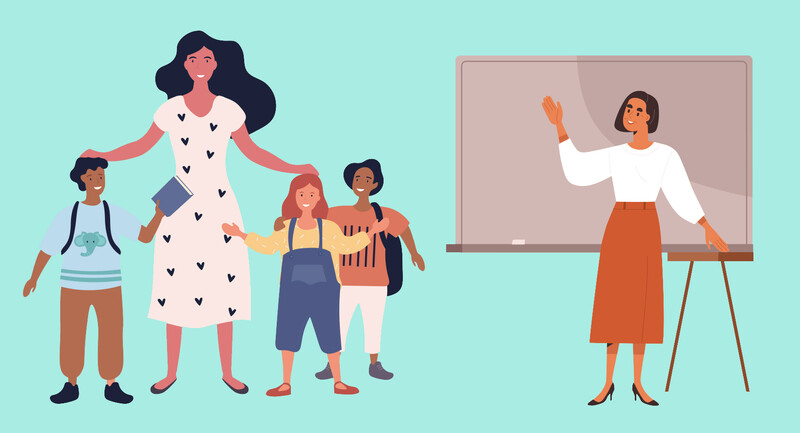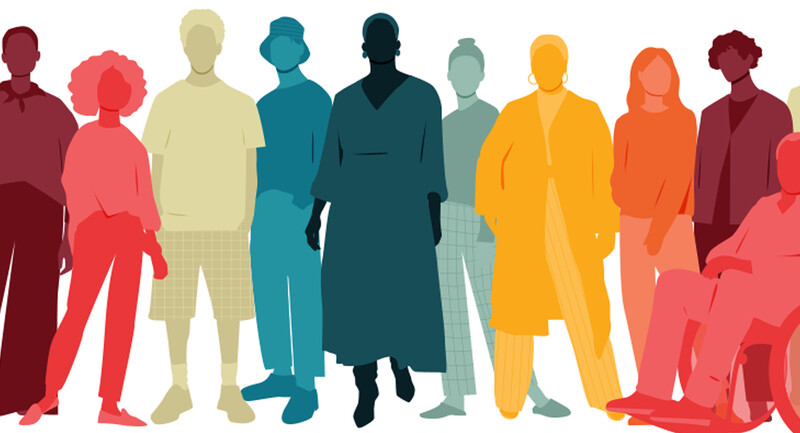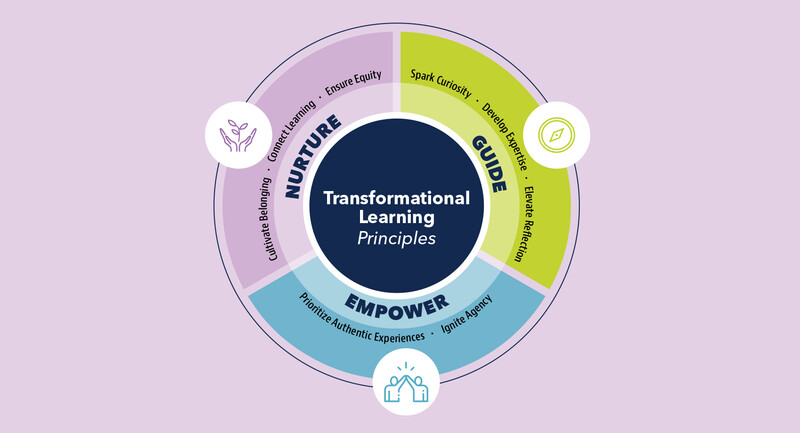Let's face it—technology-integration PD experiences too often feel like uninspired one-off, one-size-fits-all events. For all our hopes that technology can be used in ways to engage and meaningfully connect to the interests and concerns of our young learners, we strangely don't do enough to engage the teachers. It is too easy to forget that when it comes to technology, many teachers are learners also.
Like students, teachers benefit from the same ideas being revisited over time. They also benefit when they can build their understanding while making something personally meaningful and specific to their lived experiences. And like our students, teachers also learn more when they have time for reflective conversations with peers.
Our district, Redwood City School District in California, started exploring approaching professional development in this manner in 2016 and took steps to build Empowered Digital Learners, a professional learning program for integrating technology into instruction. This name borrows language from the International Society for Technology in Education's Standards for Students (ISTE, 2016). EDL intentionally turns the page on the one-off, one-size-fits-all technology PD approach and gives teachers a powerful learning experience like the ones we hope they will feel empowered to give their students.
This program intentionally turns the page on the one-off, one-size-fits-all technology PD approach.
Over the years, word of the program spread to other districts and PD providers in the area, and it inspired a research-practice partnership with our local university (Stanford) to unpack what works well for teachers and why. Some of the key elements of Empowered Digital Learners include spacing the professional learning experience across several weeks, positioning teachers to experience ISTE student standards as learners themselves, inviting teachers to create and share their own "PD Snack" resources and presentations based on what worked in their classrooms, and one-on-one coaching during which a thought partner helps imagine how to leverage technology tools to empower learning in the classroom.
1. Give Teachers Time to Learn and Experiment
Empowered Digital Learners is not meant to be, and will not work well, as a one-and-done PD experience. It is a voluntary multi-week program, where a group of teachers from across the district participate in collaborative whole-group sessions and one-on-one or small-group coaching meetings. Spacing the sessions out is key to giving teachers time to experiment and work on their own side projects. It also provides valuable time for teachers to collaborate with one another.
2. Let Teachers Experience What Their Students Do
During whole-group sessions, teachers unpack the concepts and research behind our district's Learner Framework Pillars: Empowered Learners, Knowledge Constructors, Effective Collaborators, and Creative Communicators. Teachers get firsthand experience practicing each one of these learning skills, each adapted from the ISTE Standards for Students.
In the first sessions of the program, teachers are given choices about what to read and research related to the pillars of the learner framework. They select and examine reading materials and use what they learned to collaboratively construct common definitions of the pillars. They represent these definitions visually by creating infographics in Canva, resources that the entire cohort then use as a reference throughout the EDL program.
Then, to reinforce our focus on knowledge construction and effective collaboration, teachers in the group sessions use different digital tools in the context of their own learning. This might include building their own virtual spaces in Google Slides, sharing their thinking in a Flip video, or collaboratively brainstorming on Jamboard. Closing the loop, teachers individually and collectively reflect on what worked for them as learners and how they might use a similar approach in their own classrooms.
3. Allow Teachers to Share Ideas with Their Peers
One part of EDL asks teachers to gather data through student surveys and empathy interviews with select students. An empathy interview allows the teacher to get a better sense of a student's experience of school. Based on what teachers learn about their class, they construct aspirational goals focused on deepening student learning. Because each teacher's class has different strengths, interests, and challenges, the focus of their aspirational goals reflects their students' unique needs. For example, one middle school science teacher crafted an aspirational goal for his students to become curators by creating collections of artifacts that demonstrate their understanding of a unit.
Emphasizing the digital aspect of the program's name, we encourage and guide teachers toward considering how technology might aid in reaching the aspirational goal. During a traits and reproduction unit, the science teacher had his students use the online tool Book Creator to compile their own collection of information relevant to the claims they were investigating about what traits are passed from generation to generation and why. They used this collection to write a scientific argument and to share their research with other members of the class.
Teachers in EDL then create mini-lessons based on the changes they made in their classrooms. These "PD Snacks" are shared with colleagues through district newsletters and in staff meetings. The nuggets of learning inspire others to try out similar approaches, and teachers can reach out to the EDL participating teachers to learn more.
As a culminating event at the end of each school year, the district invites teachers who participated in the EDL cohorts to lead interactive sessions at a conference open to all district teachers. In one conference presentation, for example, the middle school science teacher mentioned earlier and his colleague led a session on Book Creator to help other teachers understand how they might use the tool in their lessons.
4. Provide One-on-One Coaching
Coaching sessions with one of the district's technology specialists is a last, yet very important, part of the EDL experience. Coaching is an opportunity to have productive and supportive one-on-one conversations around specific questions that teachers might have. The conversations are focused on supporting classroom exploration of new digital tools and strategies that empower students as learners. Each teacher meets with their coach three times.
Our collaborators at Stanford have been reviewing some of our coaching conversations to help us understand how coaching to support technology use works. For example, we are seeing that coaches are most effective when they fluidly alternate in a coaching session between listening and advising—empathetically hearing in detail what is going on in our teachers' classrooms, drawing ideas from teachers' own background knowledge, and generating specific new ideas for how to use technology in ways that align with ISTE standards and our district framework (Wachtel Pronovost & Lee, 2023). The coaching sessions also allow the opportunity to bridge across other instructional priorities our school district is focused on, current research, and each teacher's own classroom experiences. Said one 6th grade teacher, "The coaching was the most compelling piece. Having a collaborative thought partner and sounding board is invaluable and contributed to the most growth for me."
Incorporating Research Best Practices
Empowered Digital Learners was developed in-house. Therefore, when we partnered with researchers from the Stanford Graduate School of Education, we were eager to ask them to help us articulate our core priorities and show us how published education research could take the program even further. The researchers confirmed that much of what we were doing was in line with current research on best practices for professional learning. But they have helped distill the "secret sauce" of EDL as having the following ingredients, which are qualities that any school who wishes to adopt a similar program can use as guidelines:
Collaborative—Teachers collaborate on projects in groups of various sizes during workshops and collaborate with their coach during one-on-one or small-group coaching sessions (Darling-Hammond et al., 2017).
Learner-Centered—Adult learners are treated like adults, while engaging in similar ways to how their K–8 students could be expected to participate (Darling-Hammond et al., 2017).
Promotes Learner Agency—Teachers select their own learning goals connected to key components of the program and determine how they incorporate the goal into their instructional practice (Desimone et al., 2002).
Promotes Technology-Enhanced Learning—Teachers utilize new and familiar digital technology to accomplish shared learning goals, rather than simply learning about how to use the digital technology (Ertmer & Ottenbreit-Leftwich, 2013).
Reflective—Teachers reflect on their learning through group conversations and one-on-one coaching conversations (Ottenbreit-Leftwich et al., 2020)
Sustained—Teachers engage in learning and reflection over a sustained period of time, often including multiple workshops/meetings and one-on-one or small-group coaching sessions (Darling-Hammond et al., 2017).
Voluntary Participation—Teachers voluntarily apply to participate in the program and select their own learning goals based upon the objectives of the program (Bakhshaei et al., 2018).
Teachers utilize new and familiar digital technology to accomplish shared learning goals, rather than simply learning about how to use the digital technology.
Understanding where our program aligns with research has allowed us to better advocate for the expansion of the professional learning program into other content areas and allowed other educators to help bring similar programs to their districts.
A Replicable Program
In the past couple of years, EDL has spread and grown in our local area. Our district has tailored the program for specific subject areas (including one for math), and our colleagues at the local county office of education have adopted the program for their own PD offerings as well. Citing some of the research previously mentioned, we have prepared a guidebook for others wanting to start their own EDL programs. EDL has improved and continues to grow and thrive. There is an old saying that we tend to teach in the same way we were taught. That's one way to explain why some traditional ways of teaching from decades back are still in use today. But by organizing PD so that teachers are empowered learners, we can provide a professional learning experience in which teachers themselves are active learners of technology integration in new and powerful ways. We are hopeful this will help our teachers to "pay it forward" by empowering their students with technology as well. Reflect & Discuss
➛ What type of tech-integration PD would be most helpful to you and/or your school? What about this model is most useful or replicable?
➛ Where does PD on edtech most often fail? Why?
➛ What would a "PD Snack" look like for you? Could you create something similar to share with colleagues?








